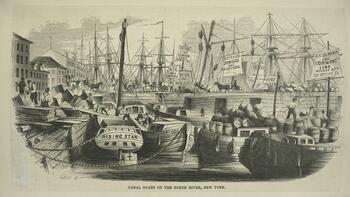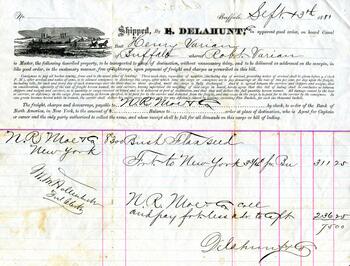The economic impact of the Erie Canal was immediate and stunning. The Erie Canal was the major force in a market revolution that brought about modern capitalism in America. It dramatically changed the way people worked and lived, and the way business was conducted. The costs to ship goods and materials between New York and the Midwest decreased tenfold, and the volume of materials that could be shipped via canal (rather than by land) nearly tripled. New York City went from being the seventh largest port in America in the 1790s to the largest port in 1830. Commercial investments, spurred by the realization of enormous profits from trade, were now replacing land investments in New York.
Aggressive merchants, led by former New York State legislator (and future first Mayor of Chicago, Illinois) William Butler Ogden, pushed for the opening of a trade route from New York to Chicago, capitalizing on the success of the Canal and opening the west to exponential economic growth. The financial investment in the Erie Canal was realized in 1834, less than ten years after the grand opening, when revenues from canal tolls exceeded eight million dollars, erasing the original construction debt.
This 1825 illustration depicts canal boats on the North River in New York. The Dutch and English called what we know today as the Hudson River the "North River" and the Delaware River the "South River." Courtesy of The New York Public Library.
This is a shipping receipt from Delahunt & Co., one of many businesses that used the Erie Canal to move goods. Timely delivery using canal transportation was one of the most attractive features that lured many businesses to engage in canal commerce. Courtesy of The Erie Canal Museum via Central New York Library Resources Council and Empire State Digital Network.

